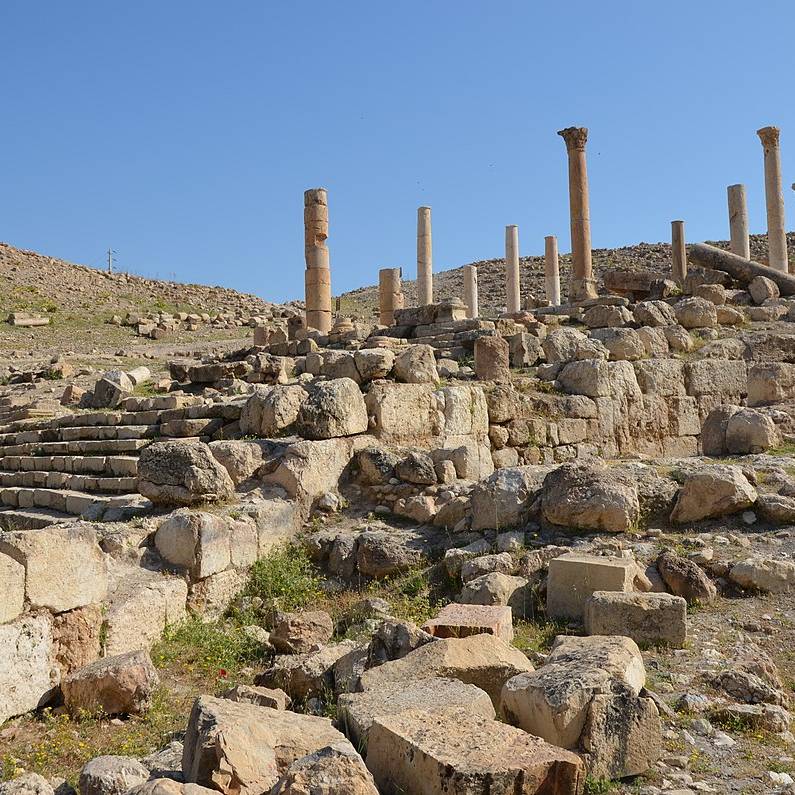
Nestled in the Jordan Valley, Pella emerges as an archaeological marvel, a testament to the timeless echoes of civilizations that have graced this land. Known as Tabaqat Fahl, this ancient site unveils the layers of history that have woven together over centuries. From its Bronze Age beginnings to its prominence during the Roman and Byzantine eras, Pella’s story is etched in stone and whispered through its ruins. Its strategic location along trade routes and its access to water sources have shaped its destiny, giving rise to a city that once thrived in the heart of the Decapolis league. The archaeological treasures of Pella speak volumes—a theater that once echoed with the laughter of audiences, paved streets that bore the footprints of generations, houses that sheltered the dreams of families, and fortifications that stood as sentinels against time. The remains of a Roman theater and a Byzantine bathhouse evoke glimpses of cultural and social gatherings, while the surrounding landscapes provide a backdrop of natural beauty that has witnessed the rise and fall of empires. Pella’s significance stretches beyond its physical remains—it reflects the cultural diversity that colored its streets, a mosaic of lives that once intersected within its walls. As visitors explore its historical fragments, they become part of a narrative that connects the past with the present, an archaeological journey that bridges ancient legacies with modern curiosity. Pella invites wanderers to traverse the pathways of time, to listen to the stories whispered by the wind, and to unravel the mysteries that have endured through the ages.